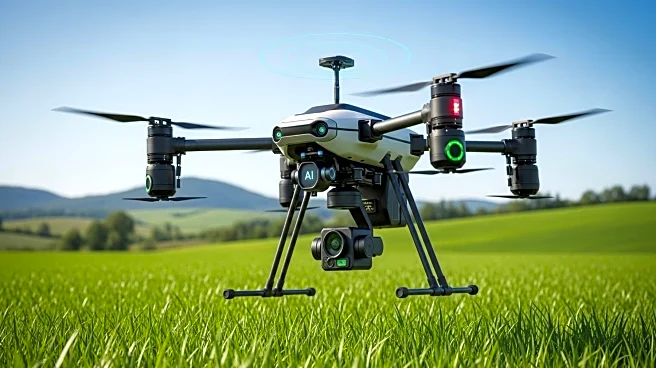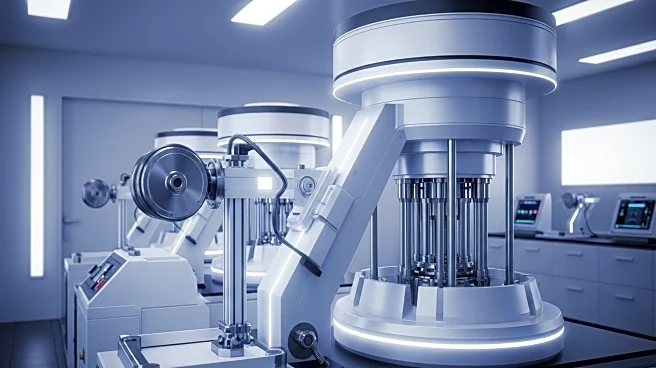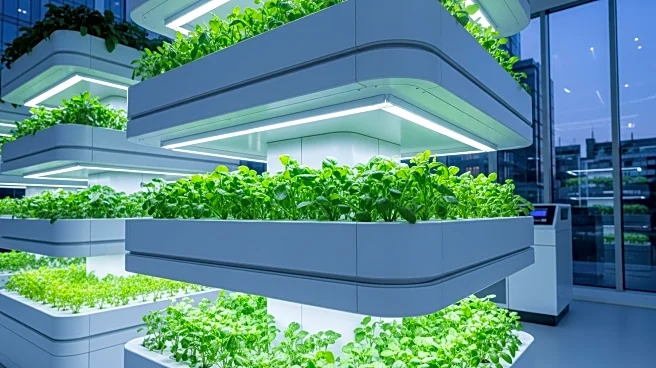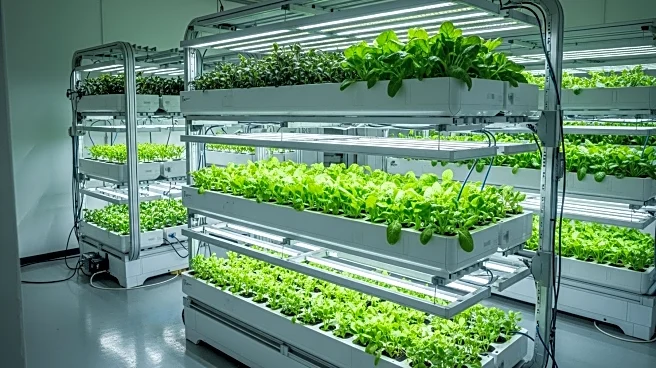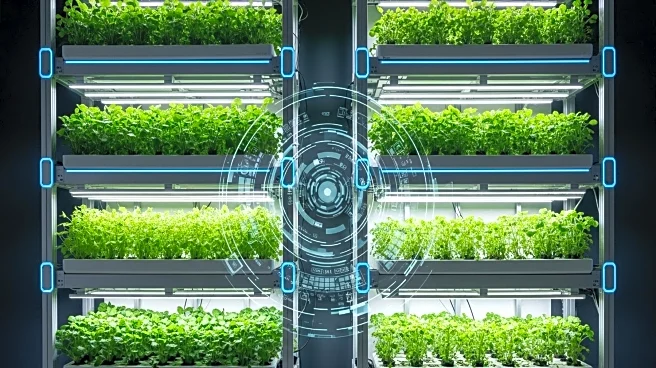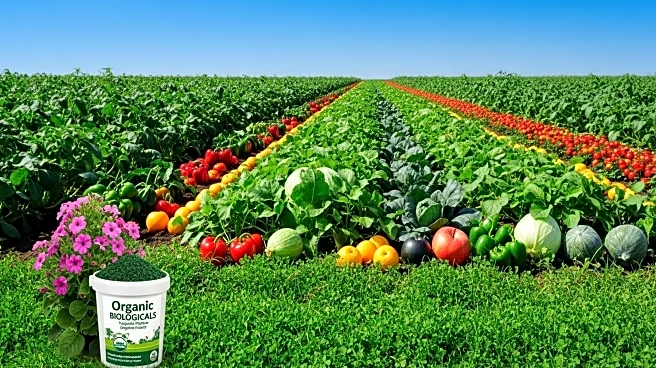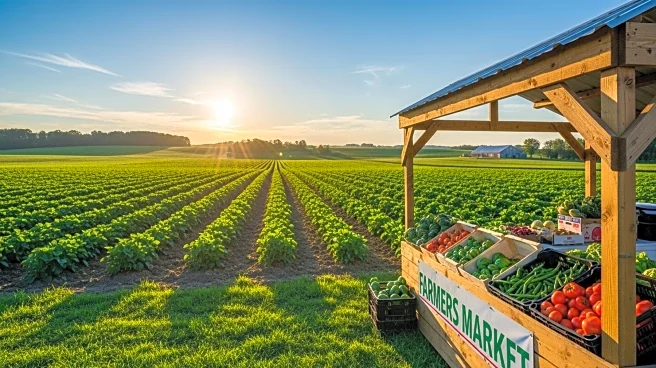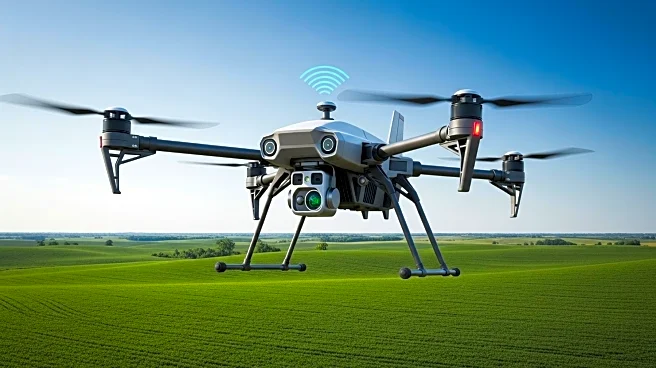What's Happening?
The U.S. agricultural antibacterials market is expected to grow significantly, reaching $12.67 billion by 2031. This growth is driven by increasing demand for crop protection and the need to control bacterial infections in agriculture. Key players like Valent BioSciences LLC, Syngenta, and Corteva Agriscience are leading the market. Recent developments include Peptobiotics securing $6.2 million for antimicrobial peptide technology and Sound Agriculture raising $75 million for climate-smart solutions. Innovations in antibacterial formulations are improving efficacy and safety, contributing to wider acceptance in sustainable farming practices.
Why It's Important?
The expansion of the agricultural antibacterials market reflects the growing emphasis on food safety and sustainable farming. As bacterial infections threaten crop yields, effective antibacterial solutions are crucial for maintaining productivity. The market's growth supports advancements in biotechnology and genetic engineering, which are essential for developing eco-friendly and targeted antibacterials. This trend benefits farmers by enhancing crop quality and yield, while also addressing environmental concerns associated with chemical usage.
What's Next?
The market is likely to see increased investment in research and development for new antibacterial technologies. Companies may focus on creating more targeted and environmentally friendly products to meet regulatory demands and consumer preferences. Collaboration between biotech firms and agricultural companies could drive innovation, leading to more effective solutions for bacterial disease management. Additionally, the integration of precision agriculture with antibacterial use may optimize application methods and improve disease prevention.
Beyond the Headlines
The growth of the agricultural antibacterials market raises questions about the balance between chemical use and environmental sustainability. As demand for eco-friendly solutions increases, companies must navigate regulatory challenges and public perception regarding chemical safety. The development of new technologies also highlights the importance of supporting research initiatives and fostering collaboration across industries to address global food security challenges.

